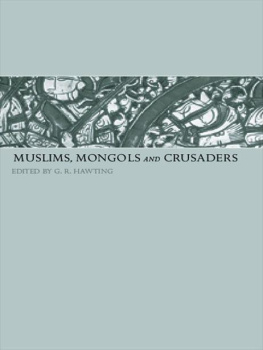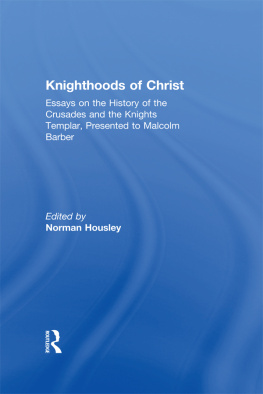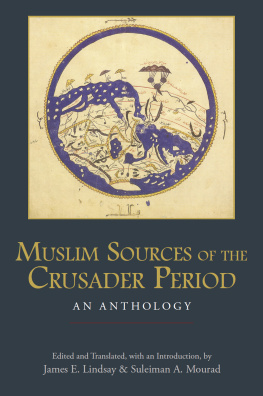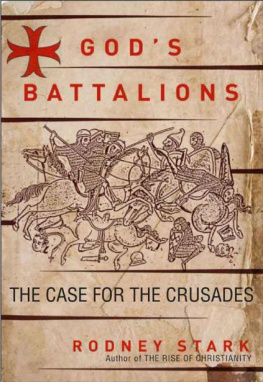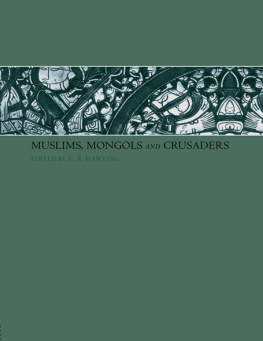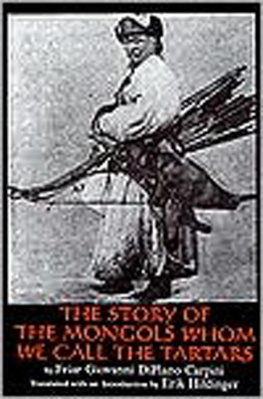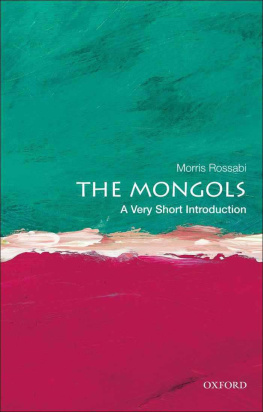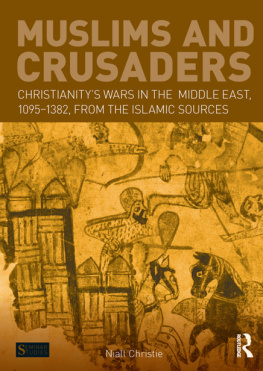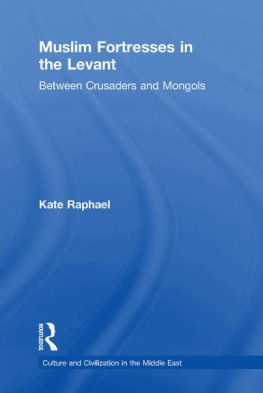MUSLIMS, MONGOLS AND CRUSADERS
The period from about 1100 to 1350 in the Middle East was marked by continued interaction between the local Muslim rulers and two groups of non-Muslim invaders: the Frankish crusaders from Western Europe and the Mongols from Northeastern Asia. In deflecting the threat those invaders presented, a major role was played by the Mamluk state which arose in Egypt and Syria in 1250. The Bulletin of the School of Oriental and African Studies has, from 1917 onwards, published a variety of articles pertaining to the history of this period by leading historians of the region, and this volume reprints some of the more important and interesting of them for the convenience of students and scholars. In making the selection the interests of those who are not specialists in the history of the Middle East and may not know the languages of the region have been taken into account. This volume will be of interest to historians of medieval Europe who are concerned with the Crusades as well to those interested in the Middle East and the Mongols. The papers here reprinted include discussion on Arabic and other sources for the period (including the controversial Marco Polo and his 'Travels'), innovative studies of military, diplomatic, administrative and other issues, and wider treatments of such things as the image of Saladin and historiography on the Mongol Empire. An introduction by the editor puts the papers in the historical and scholarly context.
G.R.Hawting is Head of the History Department and Professor in the History of the Near and Middle East at the School of Oriental and African Studies, University of London. His special interest and most of his publications relate to the early development of Islam in the Middle East.
MUSLIMS, MONGOLS AND CRUSADERS
An Anthology of Articles Published in The Bulletin of the School of Oriental and African Studies
Compiled and Introduced by
G.R.Hawting
LONDON AND NEW YORK
First published 2005
by RoutledgeCurzon
2 Park Square, Milton Park, Abingdon, Oxon, OX14 4RN
Simultaneously published in the USA and Canada
by RoutledgeCurzon
270 Madison Ave., New York, NY 10016
RoutledgeCurzon is an imprint of the Taylor & Francis Group
This edition published in the Taylor & Francis e-Library, 2005.
To purchase your own copy of this or any of Taylor & Francis or Routledges collection of thousands of eBooks please go to www.eBookstore.tandf.co.uk.
Editorial matter 2005 G.R.Hawting
Contributions The School of Oriental and African Studies
All rights reserved. No part of this book may be reprinted or
reproduced or utilised in any form or by any electronic, mechanical,
or other means, now known or hereafter invented, including
photocopying and recording, or in any information storage or
retrieval system, without permission in writing from the publishers.
The publisher makes no representation, express or implied, with
regard to the accuracy of the information contained in this book and
cannot accept any legal responsibility or liability for any errors or
omissions that may be made.
British Library Cataloguing in Publication Data
A catalogue record for this book is available from the British Library
Library of Congress Cataloging in Publication Data
A catalog record for this book has been requested
ISBN 0-203-64182-5 Master e-book ISBN
ISBN 0-203-66665-8 (MP PDA Format)
ISBN 0-7007-1393-X (Print Edition)
Copyright 2004/2005 . All rights reserved.
Reader's Guide
This ebook has been optimized for PDA.
Tables may have been presented to accommodate this Device's Limitations.
Table content may have been removed due to this Device's Limitations.
Image presentation is limited by this Device's Screen resolution.
All possible language characters have been included within the Font handling ability of this Device.
CONTENTS
G.R.Hawting
J.de Somogyi
H.A.R.Gibb
A.N.Poliak
D.Ayalon
D.Ayalon
D.Ayalon
B.Lewis
P.M.Holt
D.O.Morgan
P.M.Holt
D.O.Morgan
P.M.Holt
P.M.Holt
D.O.Morgan
P.M.Holt
P.Jackson
T.H.Barrett
R.Amitai-Preiss
P.Jackson
INTRODUCTION
The period and its historiography
One notable feature of the period in the history of the Middle East with which the articles collected in this volume are concerned is the migration into the region, or its invasion, by peoplesTurks, Franks and Mongolsoriginating outside it. These groups ruled over and settled among an already existing population which was diverse but by this time probably predominantly Muslim, and Arabic or Persian speaking. It may be useful to begin with a summary account before proceeding to reflect on the way in which academic scholarship on the period has developed.
During the ninth and tenth centuries, Turks became the most important element in the armies of the eastern Islamic world. Some achieved positions of power to the extent that they were able to establish and maintain dynastic states independent of the authority of the caliphs in Baghdad. Frequently, the Baghdad caliphs were little more than figureheads, with real power in the hands of Turkish generals and commanders.
The Turks had first come into the Islamic world as individual slaves, selected for training as soldiers and conversion to Islam, to be followed by manumission and service in the armies of the caliph or other powerful figures. Islam had not yet spread among the Turkish tribes of Central Asia and they were still legitimate targets for Muslim raiders and slave traders, their reputation as fighters high. The institution of the slave soldier (ghulam, mamluk) was to remain a characteristic feature of Muslim armies in pre-modern times, and so long as there were still non-Muslim Turkish populations they were to remain a favoured source of military manpower.
During the second half of the tenth century, however, Islam began to spread among some groups of Turkish tribes in and beyond what were then the eastern border regions of the Islamic world. The reasons for, and the nature of this process of Islamization, are to some extent obscure but, given the earlier willingness of groups of Turks to adopt religions associated with the settled cultures with which they were in contact, not too difficult to envisage. One of the groups which became Muslim at this time was that of the Oghuz tribes, and in the first half of the eleventh century they began to migrate west under the leadership of the Seljuk family.
By 1055, they had won control over most of Persia and Iraq, including Baghdad, the residence of the caliphs who were the nominal leaders of Sunni Islam. Subsequently, groups of Turks continued to move west into Syria, over most of which they established control in the 1070s, and northwest into Asia Minor. There, their victory at Manzikert near Lake Van in 1071 over the Byzantine army led by the emperor Romanus Diogenes opened up Asia Minor for the first time to Islamization and Turkification. That region, before Manzikert largely Christian and Greek speaking, is now the heart of the country known as Turkey.
These free Turkish migrants into the Islamic Middle East came as Muslims, and their progress from Central Asia to Baghdad and beyond was relatively slow. This enabled them, or at least their leaders, to adapt and assimilate to the predominantly Perso-Islamic culture of the eastern regions of the Muslim world but without losing their own Turkish identity. The Christian Franks who came as crusaders from western Europe and who arrived in Syria at the end of the eleventh century, in contrast, had no interest in assimilation, although inevitably during the nearly 200 years of their presence in the region they had to adapt to many of the features of the local way of life.
Next page
